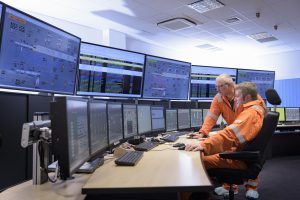So you’ve decided to take the initiative to achieve sustained energy savings at your organization. By addressing every source of electricity consumption through robust automation, comprehensive energy controls, and continuous energy monitoring, your goal can be achieved in a relatively short amount of time. But for every goal, there’s a wrong and right way to reach it.
Avoid these 4 common pitfalls as you move forward on your energy efficiency initiatives:
(1) Execute without measuring.
You can’t manage what you can’t measure. It’s like driving a car on a busy highway with blinders. By taking the time to measure your organization’s current energy performance, you’ll gain critical insights on energy consumption. Then, you can identify areas of energy waste to deliver energy savings. Use of intelligent energy auditing and metering solutions will help you collect accurate data.
(2) Ignore the basics.
There’s no sense in implementing advanced technology solutions if fundamental actions are skipped. Imagine a newly painted wall. What would it look like if hundreds of holes weren’t patched up with spackle before rolling on the paint? Without installing basic power-consumption devices and insulation material, you may achieve some of your energy efficiency goals, but missing gaps will result in continued energy waste.
(3) Use stand-alone systems.
Integrated energy management solutions will save you lots of headaches when it comes to getting disparate systems to work together. And, because emergencies can happen when you’re not around, remote monitoring of energy consumption can help you apply solutions to problems in real-time from any location.
(4) Go at it alone.
Not everyone in your organization may think energy efficiency is a top priority. Therefore, as the champion of energy efficiency at your organization, it’s up to you to advocate behavioral shifts in energy use and change the mindsets of decision-makers. Energy experts and consultants are useful resources to help get the message of energy efficiency out.
With proper planning, you can position your organization favorably to achieve up to 30% in permanent energy savings.
The right way to achieve sustainable energy savings is by combining passive energy efficiency activities with active energy efficiency strategies. Passive energy efficiency relies on the implementation of measures, low consumption equipment, and products (like insulation) to minimize thermal energy losses. While active energy efficiency is more permanent approach and involves continual measurement, monitoring, and control of energy through energy-saving devices.
Globally, there would be a significant impact on global sustainability if every organization dedicated time to improving the energy efficiency of their buildings. This is because the buildings sector is one of the largest energy consumers in the world. For example, in the U.S., buildings accounted for about 41% of primary energy consumption in 2010 according to the Buildings Energy Data Book. In Europe, energy efficiency in buildings is taking center stage with the Energy Performance in Buildings Directive (EPBD).
Any organization can achieve sustained energy savings and promote sustainability. Just know that implementing new equipment isn’t enough. And, replacing light fixtures in your building will take you only so far. If you don’t use a combination of passive and active energy efficiency strategies, you won’t achieve your goal.




Conversation
Great ! and many thanks Nick!
Are there any projects on EE coming on the ground? What projects are being implemented at your level right now?
Best regards,
Yacouba
Hi Yacouba – There are many & various EE projects underway all over the world – projects that are at the initial stages focusing on energy audits to ones that are engaging entire communities to look at assessing future growth and implementing smart city initiatives. There’s a cool case study on the Four Seasons hotel in Sydney, Australia that we worked with to ensure they avoided the pitfalls mentioned above. After the solution was implemented the hotel’s annual energy savings was 255,685 kW/h and their annual energy cost savings was measured at $32,983/year. Here’s a couple more projects – https://www.schneider-electric.com/solutions/ww/en/alr/dom/4664786-building-systems
Hi Nick;
I’m sure the last reason is the heaviest one. Don’t you have any ideas on why this happens so usually?
Hi Juan – Thanks for the note and great question. There are various reasons why everyone may not be as focused on EE as you (or I) in your organization. Most people have other pressures and priorities they’re focused on on a day to day/month to month basis and they may not see how using energy more intelligently can benefit them personally. From my experience you need to get individuals (and ideally decision-makers) involved and show them how being more informed about energy use affects the bottom line. Ultimately everyone’s role is tied to the bottom line and when an organization becomes more effective with one cost it provides the environment for that expenditure to be spent elsewhere – i.e. energy savings can be used to fund more energy/cost saving initiatives, energy savings could be spent on R&D to push a product to commercialization, or the savings could be spent on other aspects to make your organization more competitive (just a few examples). Whether I’m discussing smart energy initiatives or sustainability, I always try to understand what personally matters to the individual/team I’m speaking with and then relate how energy savings can help them achieve the goals they’re constantly trying to achieve each day – and usually the common language involves cost & savings.